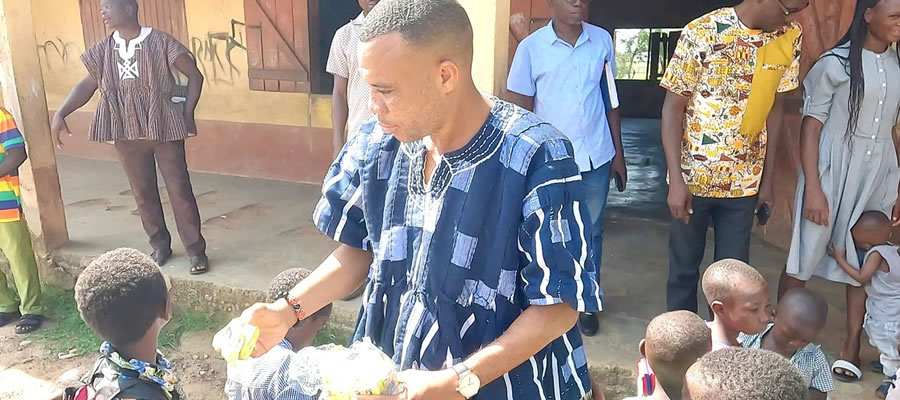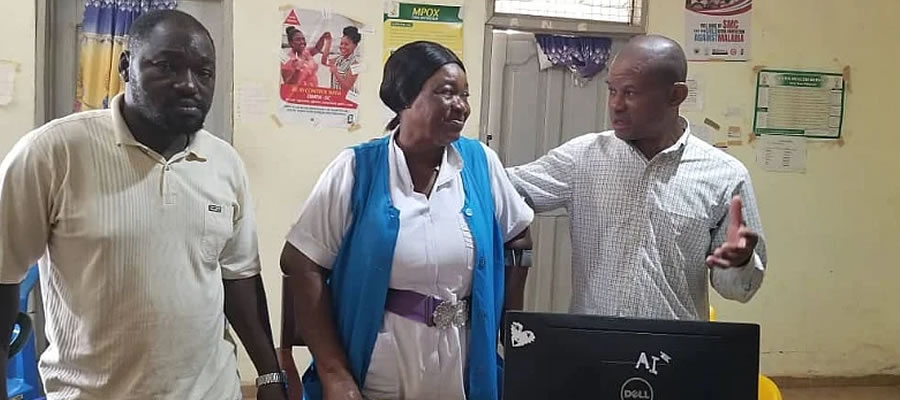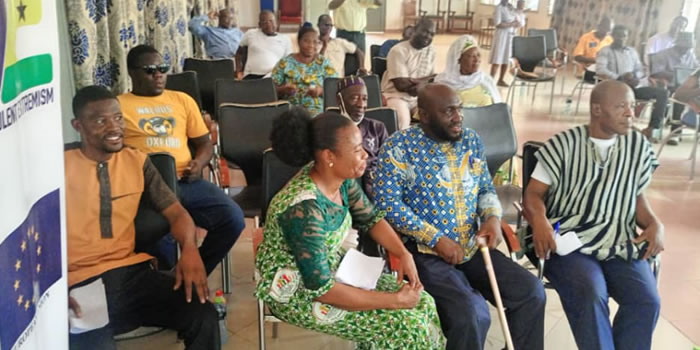

Literacy and Education
Literacy is defined as the ability to read and write in any language with understanding. The ability to read and write is critical for access and utilization of information to enhance socio-economic development.
School attendance
From Figure 3.1 below on literacy and education, a total proportion of 41.8 percent of persons in the district have never attended school. 42.2 percent currently attend school while 16.0 percent have attended school in the past. More females, 47.5 percent, compared with 38.6 percent males have never attended school and more males 46.0 percent than females 38.6 percent are currently in school in the district.
Table 3.9 shows the percentage distribution of the population 11 years and older, by sex, age and literacy status. The table indicates that 25,200 are non-literates. Of this, the age group of 65 and older recorded the highest number (4,861) of people not literate, followed by 30-34 (2,683) and 40-44 (2,436). The table also shows that of the total of 25,353 literate, 38.8% are literate in English only, 56.1% are literate in English and Ghanaian language only. The data also reveals that the male literate are more (13,999) than that of the female (11,354). However, 42.1 percent of females are literate in English only compared with 36.1 percent females. It is also clear that 58.7 percent of males are literate in English and Ghanaian language against 52.9 percent females.
Past school attendance
The data in Table 3.10 show the distribution of past school attendance for persons aged 3 years and older by sex and highest level of school attended. From the table, as at 2010, almost 1 out of every 3 educated persons (37.2%) of population aged 3 years and older in KNWD have had primary education, followed by JSS/JHS (25.8%), SSS/SHS (14.5%) and middle school education (10.3%). Those who have had secondary education are 2.8 percent, vocational/technical/commercial 1.8 percent, the lowest in the district, post middle/secondary certificate 3.2 percent and tertiary 4.5 percent.
The table further reveals that of those who have ever attending school, the proportion of males who have had primary education is 34.0 percent while that of females is 41.1 percent. The proportion of males who have attended JSS/JHS is 22.9 percent whereas that for females is 29.4 percent. Respectively, proportions of males and females who have had middle school education are 11.9 percent and 8.4 percent. Proportion of males who ever attended SSS/SHS is greater (15.6%) than that for females (13.1%). Same proportions of males and females have had secondary and vocational/technical/commercial education (1.8% each). Proportion of males who have ever attended tertiary school (6.4%) is at least thrice the proportion of females with tertiary education (2.0%).
Current school attendance school
Table 3.9 shows the distribution of persons 3 years and older who were in school at the time of the census by sex and level of education. From the table, a total of 27,799 persons aged 3 years and older are currently attending school. Of those attending school, more than half (53.4%) are in primary school, followed by those in JSS/JHS (19.6%) and those in nursery (10.2%). Those attending Kindergarten are 7.7 percent, SSS/SHS 7.5 percent, tertiary 1.0 percent, Post middle/secondary certificate 0.4 percent and vocational/technical/commercial 0.3 percent representing the lowest proportions.
Of the number of males who have ever attended school, the proportion of males in primary schools 68.0 percent whiles that of females is 53.5 percent. The proportion of males attending school who are in JSS/JHS is 11.0 percent whereas that for females is 20.1 percent. The proportion of males attending school in SSS/SHS is greater (12.0%) than that for females (6.5%). More females (0.3%) are attending vocational/technical/commercial schools than males (0.0%). Proportion of males (1.0%) attending tertiary schools is almost twice the proportion of females (0.6%) attending tertiary schools.
Date Created : 11/21/2017 2:54:21 AM








 facebook
facebook
 twitter
twitter
 Youtube
Youtube
 +233 593 831 280
+233 593 831 280 0800 430 430
0800 430 430 GPS: GE-231-4383
GPS: GE-231-4383 info@ghanadistricts.com
info@ghanadistricts.com Box GP1044, Accra, Ghana
Box GP1044, Accra, Ghana